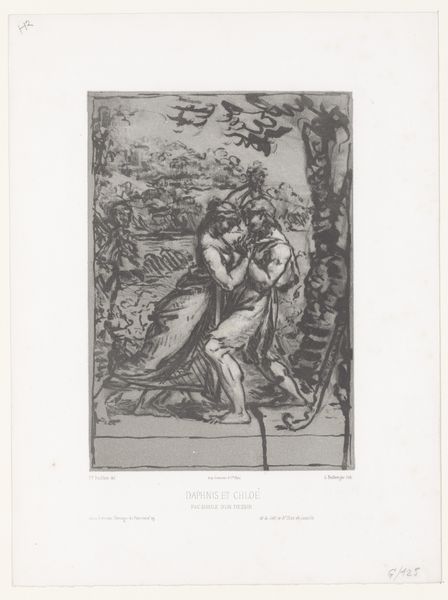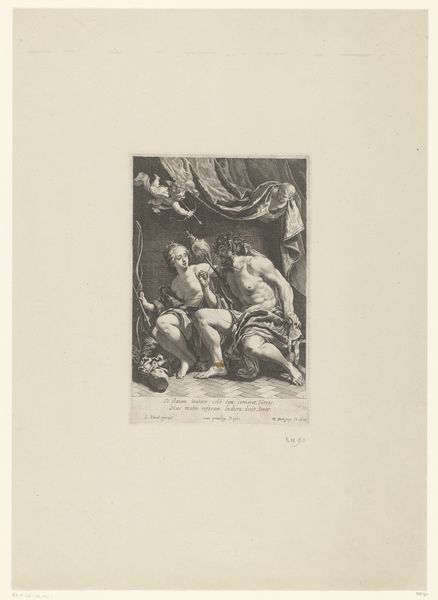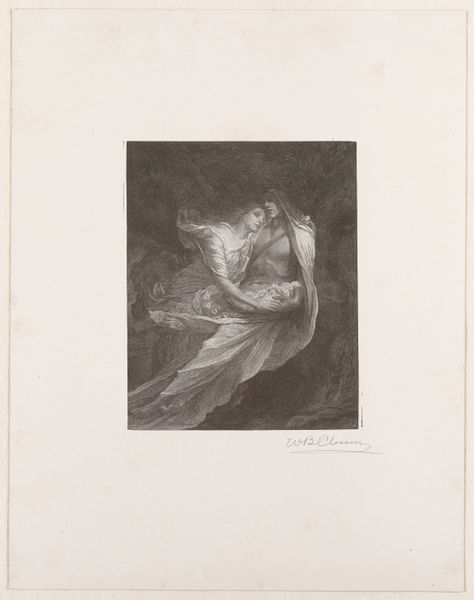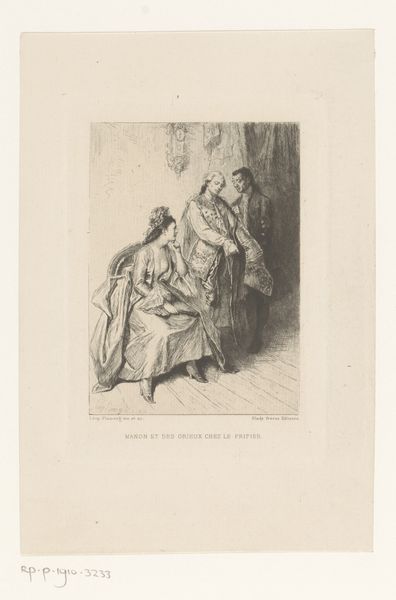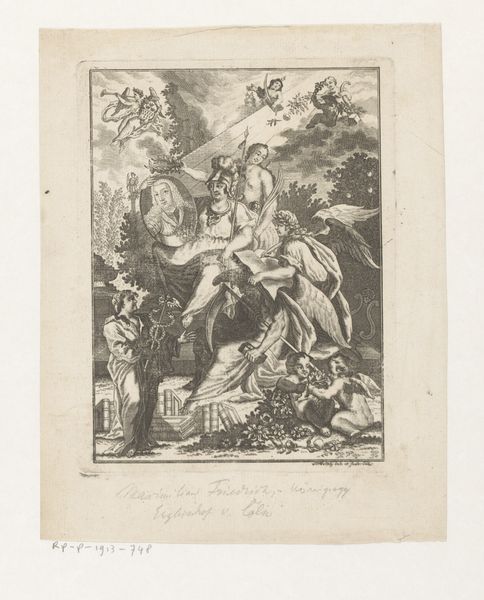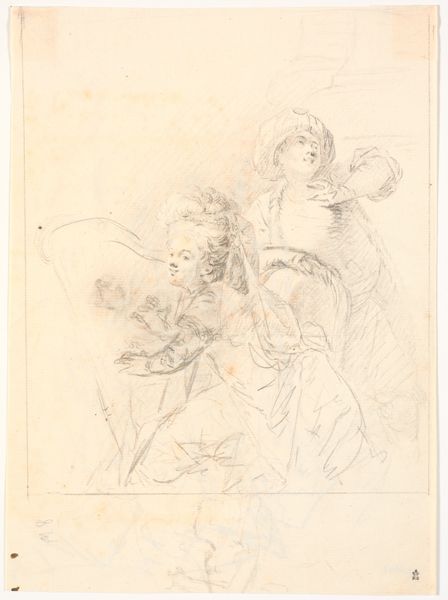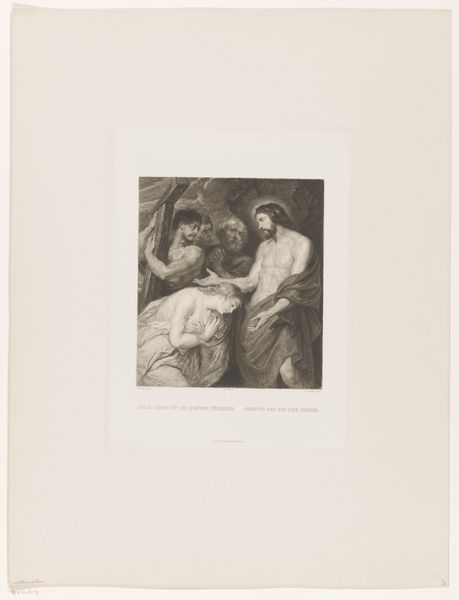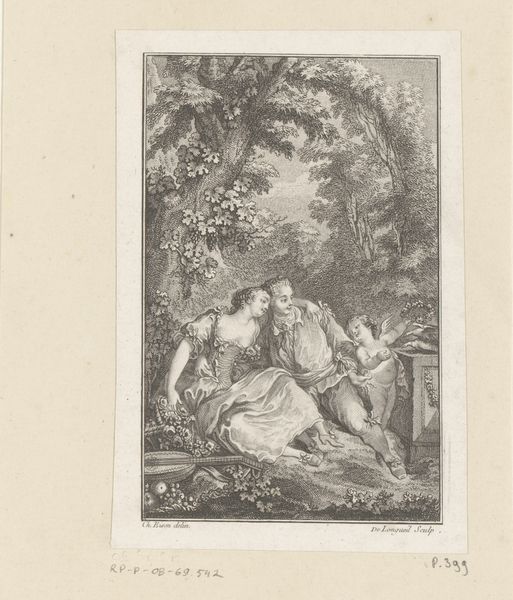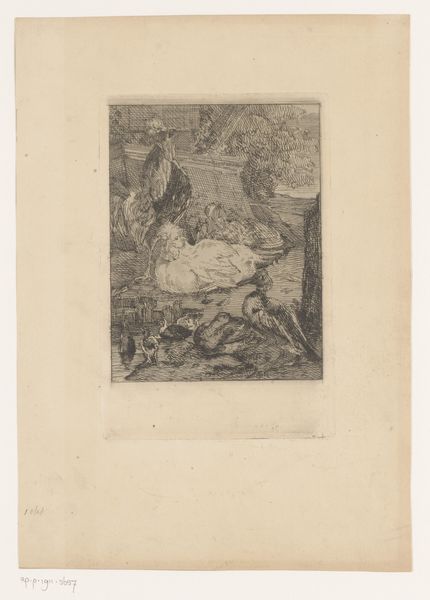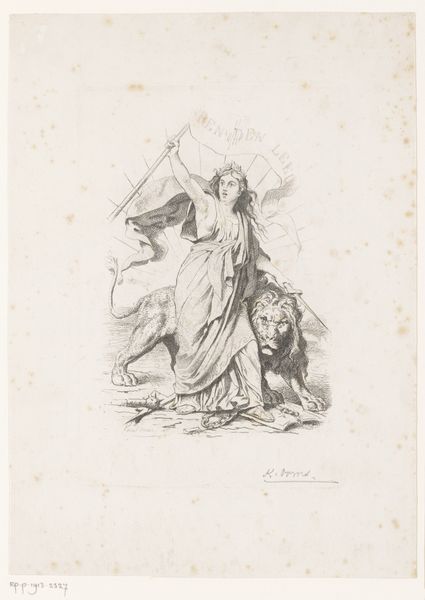
#
light pencil work
#
ink paper printed
#
pencil sketch
#
old engraving style
#
personal sketchbook
#
ink drawing experimentation
#
pen-ink sketch
#
ink colored
#
sketchbook drawing
#
pencil work
Dimensions: height 316 mm, width 225 mm
Copyright: Rijks Museum: Open Domain
Curator: Let's turn our attention to "Allegorie op de goede regering," an 1881 ink and pencil work by Henri Toussaint. My first impression is that it's quite delicate; the rendering reminds me of an older engraving, though much softer. The overall effect is strangely comforting despite the dramatic subject matter. Editor: It looks like a study on power and its social ramifications, especially when considering who had the luxury of creating such works and the conditions of artistic production. Toussaint made this during a period of intense social stratification in France. How did his position affect his rendering of this allegory? Curator: I'm intrigued by your socio-economic angle! Formally, the light pencil and ink create a sense of movement—notice how the figures flow into each other, particularly the central female figure and the vanquished male figure beneath her. There's a definite hierarchy implied through composition, but what is she holding? Editor: Well, allegorical representations of women holding certain objects would reinforce patriarchal notions around governance, concord, and power in society and politics. A symbol becomes a material tool of production, to reinforce social power relations. Curator: I do not disagree with that viewpoint. Looking closer, it resembles a broken chain. This simple element enriches the semiotic density of the whole work by introducing social disruption, offering resistance perhaps... which counters your theory on pure reinforcement. The artist might subtly criticize those power dynamics through this small, but crucial visual element. Editor: It does present something more ambivalent than sheer reinforcement, it shows the limits of allegorical symbolism in portraying a complex web of power. The artistic experimentation with ink hints at evolving production practices. Curator: Exactly, this ambiguity might be a purposeful aspect of the work's structural composition. Editor: Reflecting on both material constraints and evolving cultural perceptions gives this piece new vitality and helps understand historical making and creative interpretations. Curator: A perfect blend of formalism and historical thinking indeed!
Comments
No comments
Be the first to comment and join the conversation on the ultimate creative platform.
